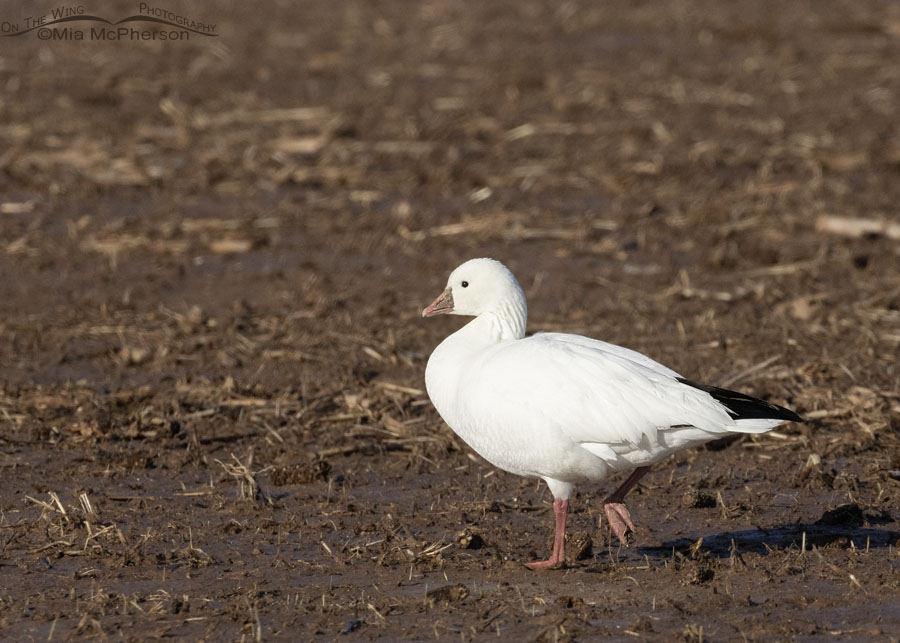
Ross’s Geese Images, Facts and Information:
Anser rossii
- Ross’s Geese are small waterfowl with rounded heads and pink bills that are blue-gray at the base. They come in two color morphs: a white morph with black wingtips and a blue morph with a grayish-blue body. Females are slightly smaller than males.
- Ross’s Geese are migratory birds. Ross’s Geese breed in the Canadian Arctic and winter in the southern United States, including California’s Central Valley, New Mexico, and parts of Mexico.
- Ross’s Geese thrive in Arctic tundra during breeding season, preferring flat plains with some rock outcrops and wet meadows. In winter, they frequent shallow lakes, freshwater marshes, flooded stubble fields, and other agricultural lands.
- Ross’s Geese eat grasses, sedges, small grains, and other vegetation. They often forage in large mixed flocks with Snow Geese.
- Ross’s Geese lay 3 to 5 eggs which hatch in about 23 days. The females incubate and they are monogamous.
- Ross’s Geese are sometimes called “Arctic Midget Geese” due to their small size compared to other geese species.
- A group of Ross’s Geese can be called a “blizzard” of geese, referring to their white plumage.
- The oldest known Ross’s Goose was at least 22 years and 6 months old.
I hope you enjoy view my Ross’s Goose photos.
Mia McPherson
White morph Ross’s Goose in corn stubble
Title: White morph Ross’s Goose in corn stubble
Location: Sequoyah National Wildlife Refuge, Oklahoma
Date: 02/23/2025
Mia McPherson
Resting white morph Ross’s Goose at Sequoyah National Wildlife Refuge
Title: Resting white morph Ross’s Goose at Sequoyah National Wildlife Refuge
Location: Sequoyah National Wildlife Refuge, Oklahoma
Date: 02/23/2025
Mia McPherson
Ross’s Goose in a corn field
Title: Ross’s Goose in a corn field
Location: Sequoyah National Wildlife Refuge, Oklahoma
Date: 02/23/2025
Mia McPherson
Ross’s Goose adult looking for food
Title: Ross’s Goose adult looking for food
Location: Sequoyah National Wildlife Refuge, Oklahoma
Date: 02/23/2025




